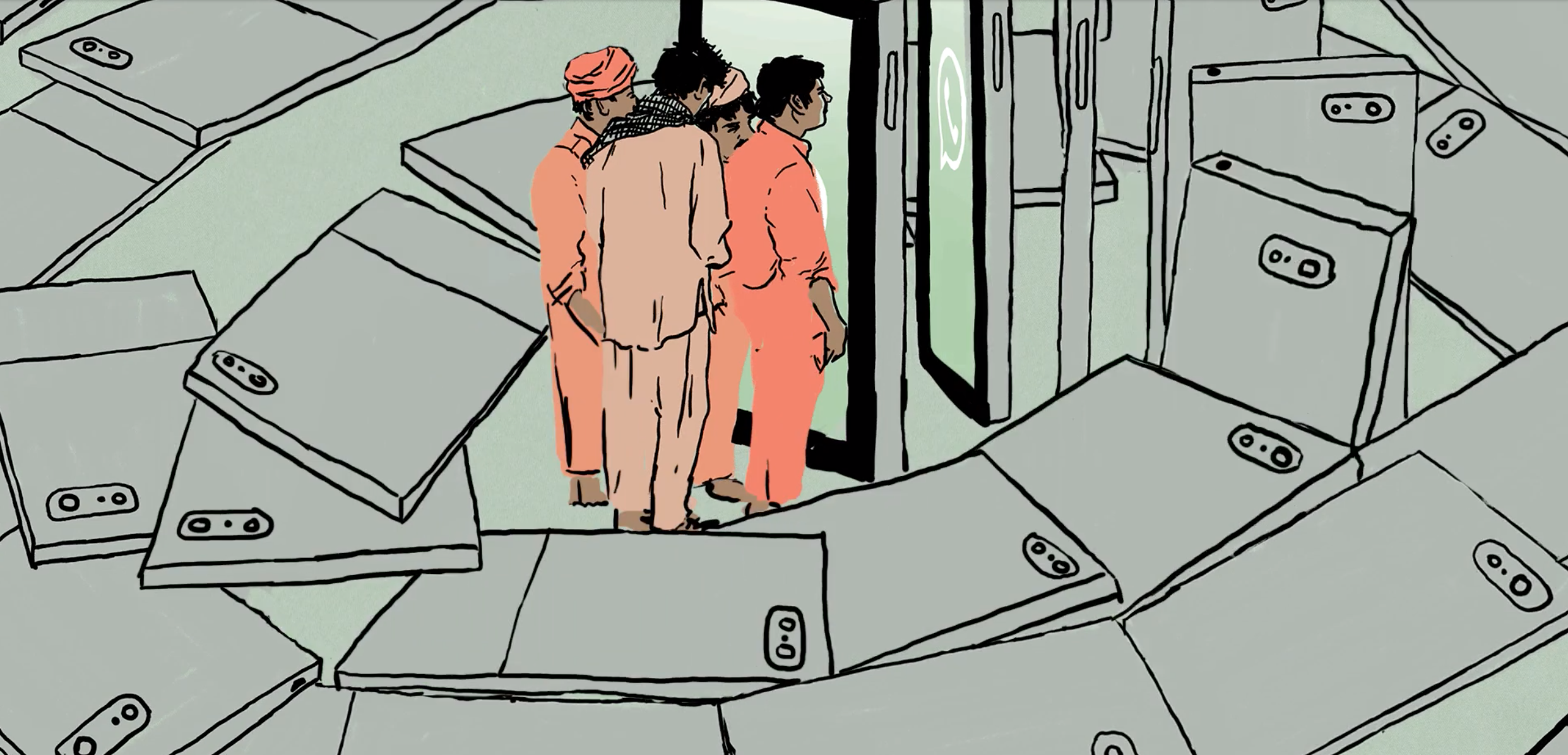
THE BRIGHT BLUE shutters on the windows were splintered and the door was kicked in. Inside, files were strewn across the floor and the light green walls were splashed with blood. Five men were dead, beaten to death with fists, feet, sticks, and office furniture wielded by a raging mob.
The dead men—four in their late forties and one whose age remains unknown—had arrived in Rainpada earlier that day, at around 9 am, on a bus from Solapur, some 300 miles south, to attend a Sunday market. According to their families and police, all of them were members of a Nath Panthi Davari Gosavi tribe, a nomadic group that roams India’s western Maharashtra state, surviving mostly on alms. The men sat under a tree not far from where they had gotten off the bus and, as they ate, handed a biscuit to a young girl.
Six weeks later, Hemant Patil, the assistant police inspector for Dhule district, in which Rainpada is located, explains how this seemingly innocuous gesture had enormous consequences. For about a week before the men arrived, rumors circulated on the messaging system WhatsApp warning of bands of kidnappers roving the area and infiltrating villages to snatch young children. In one particularly grim version of the rumor, the children’s organs—kidneys and hearts—were harvested and sold.
As Patil, a veteran officer with a flat-top haircut and thick mustache, speaks, he begins swiping through gruesome crime scene photos stored on his phone before coming to a video that officers believe helped stoke fear and unease. It shows photos of pale, lifeless children laid out in rows, half covered with sheets. A voiceover warns parents to be vigilant and on the lookout for child snatchers.
The photos are not fake, but they don’t show the victims of a murderous Indian kidnapping ring either. The pictures are of children who were killed in Syria during a chemical attack on the town of Ghouta in August 2013, five years earlier and thousands of miles away.
The men’s interaction with the girl quickly attracted attention. Soon a crowd began to gather with people demanding answers from the men. “They started to ask them ‘Who are you?’ ‘Where did you come from?’ ‘How did you get here?’” Patil says, growing more animated as his retelling of the confrontation builds. “The quarrel began there.” The men, who were already being beaten by the crowd, were brought to the panchayat—the village office—by some concerned village bystanders and locked inside for their own protection. Over the next 40 minutes, a mob outside the building swelled into the thousands. A few people attempted to quell the crowd, but the effort was ultimately unsuccessful and people stormed the office.
The killings were widely described in the news media as “lynchings,” but the phrase belies the frenzy of violence that unfolded. Videos published by local media outlets show men stomping on one of the victims as he pleads for help. Two other men lift chairs above their heads then bring them crashing down, repeatedly striking the injured man. One chair can be seen breaking apart from the force of the blows. “They were brutally murdered,” Patil says flatly.
Police were dispatched from Pimpalner, a town about 25 miles away, just after 11 am. They arrived almost an hour later, but any hope of saving the men had by then passed. Villagers were so enraged and convinced of the men’s guilt that they wanted to burn the bodies rather than turn them over to authorities.
Twenty-three people were arrested shortly after the incident, with police using numerous videos of the melee captured by bystanders on phones to identify those believed to be involved. Another five were arrested in the course of the investigation. All of the suspects are being held in the Dhule jail, a squat, dated structure near the city center that houses around 350 detainees. The group is barred from receiving visitors who are not family members, the senior jailer says. She adds that all have denied taking part in the violence.
The five male victims in Rainpada were part of a string of killings that took place over the late spring and summer linked to messages spread on WhatsApp, the Facebook-owned encrypted messaging platform. Police and government officials estimate that more than two dozen people have been killed by mobs, though no official tally is being kept. IndiaSpend, a data journalism outlet, pegs the figure at 33 killed in 69 incidents of mob violence between January 2017 and July 2018.
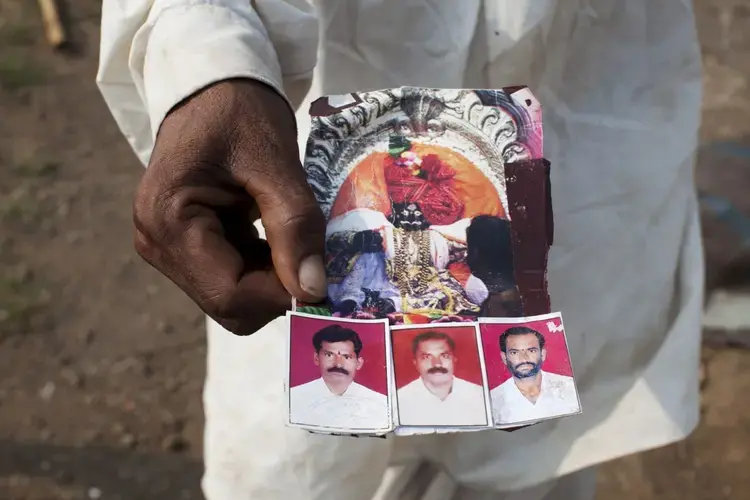
The killings have thrust WhatsApp—a company that has largely skirted the recent controversies over hate speech and disinformation that have dogged it's parent company and cofounder Mark Zuckerberg—into the heart of a contentious debate over security, and privacy.
The Indian government has cast much of the blame for these killings on WhatsApp. In August and again in late October, the government asked the company for the ability to stop and trace problematic messages, a demand that would short-circuit the encrypted security that is central to the app’s popularity. At the same time, critics of the government accuse it of using the platform as a convenient scapegoat while failing to sufficiently address underlying issues of intolerance, weak policing, caste divides, and nationalist rhetoric that has fueled violence again and again.
For WhatsApp, the timing of this unwanted attention is highly inconvenient. It is waiting for permission from Indian financial authorities to fully launch its mobile payments system. The system is currently in a beta version with almost a million users. Facebook, which owns WhatsApp, is bullish on the fuller prospects. “All signs point to a lot of people wanting to use this when the government gives us the green light,” Zuckerberg said of the payment platform on an earnings call in late July.
Even a cursory glance at the potential for India’s digital payments sector makes it clear why he is enthusiastic. Credit Suisse, in a February research note, said that the digital payments market could reach $1 trillion by 2023. In September, citing unexpectedly strong growth, it revised that estimate, saying it now appears to be “conservative.”
WhatsApp’s struggles in India are further complicated by a significant shift in the nation's approach to foreign technology companies. Government regulators and ministers are calling for increased restrictions on foreign tech giants—Amazon, Facebook, and Google among them—that have come to dominate the Indian internet. Spurred in part by the General Data Protection Regulation enacted in Europe, lawmakers are weighing greater data safeguards.
A new data localization regulation for payment companies went into effect in October, mandating that certain types of data need to be stored physically inside India. According to one consultant familiar with the process, the IT ministry is compiling comments on a broader draft data protection bill that could be submitted to Parliament as early as this month. A draft of a new policy on ecommerce is also expected to be released shortly.
All these regulatory moves are part of a larger government goal of asserting India’s technological prowess, amid rising protectionism and set against the backdrop of next year’s election. India—a country of 1.3 billion people—has long provided the backbone for foreign technology firms, which have so massively outsourced to the country it earned the name the “world's back-office.”
Yet despite this abundance of skilled workers, and to the displeasure of many in government and the tech sector, India has yet to produce a homegrown tech behemoth on par with China’s Alibaba and Tencent. They also believe that foreign companies have retained too much say in dictating how India regulates the sector, leaving the country playing by the rules of others. All of which is to say that the Indian government is less inclined to give companies like WhatsApp a pass or easily clear the way for their ambitious plans for the country.
“The government’s message is: If you want to do business in India, do it on our terms and conditions or you are free to leave,” says one longtime IT industry consultant advising the government. “The Indian system in the past has not been strong enough to make these types of demands. It has always been ‘Do it the Apple way, do it the Facebook way, do it the Amazon way.’” For the past 30 years, the consultant says, “there has been huge arrogance from these American companies” working in India. That era may be coming to a close.
THE SMALL, BRIGHT green WhatsApp icon is ubiquitous on India’s hundreds of millions of smartphones. The platform has transformed daily life here for its users, which the company says exceed 200 million—its largest market. When Facebook acquired WhatsApp in 2014, the staggering purchase price— $19 billion (that figure later rose to $22 billion)—drew stunned responses from some industry observers. At that time, the app was relatively unknown in the US. Time magazine asked “What is WhatsApp?”
But in markets like India, as well as Brazil and Mexico, WhatsApp was already a dominant player in messaging. The app’s simple, clutter-free design made it easy to use, even for people picking up a phone for the first time. In parts of rural India, where connectivity is limited and where websites struggle to load, the app can often function without issue.
While the company says that nine in 10 messages in India are sent peer to peer, it has developed into much more than a way to stay up to date with friends and family. It’s used by magazines to distribute news, by shops to peddle goods, and by political parties to pump out tremendous amounts of promotional material, both verified and false. “People in India can live without oxygen,” says Vishwas Pandhare, the superintendent of police in Dhule, who took over the top post following the July killings. “But without WhatsApp they will die.”
The ease of use has been tremendously beneficial, but it also allows for the spread of falsehoods at a startling speed to huge amounts of people. Plummeting data prices and cheap, 4G-enabled smartphones—as well as “feature phones” like the $43 JioPhone 2, launched this summer—have put the platform in the hands of many people coming online for the first time. These new users are especially vulnerable to the kind of online manipulation that people more familiar with the internet would detect. New research shows that WhatsApp usage can exacerbate groupthink, sometimes mobilizing groups into acts of violence.
Starting last spring, the platform began being linked to incidents of mob killings, most of which fit a similar pattern: People deemed to be “outsiders” were targeted by large mobs accusing them of being child kidnappers after rumors to be on the lookout circulated on WhatsApp. Some of these false rumors appeared in the form of highly convincing doctored bulletins from local police; others used the photos from Syria and manipulated videos.
Killings occurred in May and June, but the high death toll in the Dhule incident marked a tipping point for the government. Days after those killings, the IT ministry admonished WhatsApp for allowing harmful messages to spread on the platform. The ministry said it expressed “deep disapproval” in a letter to the company’s senior management and urged “that necessary remedial measures should be taken to prevent proliferation of these fake and at times motivated/sensational messages.” It added, “The Government has also conveyed in no uncertain terms that WhatsApp must take immediate action to end this menace and ensure that their platform is not used for such malafide activities.”
WhatsApp responded the same day, saying the company was “horrified by these terrible acts of violence” and was working to educate people on how to use the platform safely as well as prevent its misuse through measures like blocking spam. But the company reiterated its stance on privacy. “This focus on privacy brings many benefits, though as with all technology there are tradeoffs,” the company said. “And for WhatsApp, that's the inability to see problematic content spreading through private conversations on our app.”
The government was unsatisfied with the response. Just over two weeks later, as WhatsApp executives visited the country, the Ministry of Electronics and IT again singled out the company, saying “irresponsible messages in large volumes on their platform have not been addressed adequately.” The statement added, “It has been conveyed to them in unmistakable terms that it is a very serious issue which deserves a more sensitive response.”
In a second letter, WhatsApp said it had established a legal entity in India. The company also said it was hiring employees to build a team working in the country, addressing a key concern of the government.
As official pronouncements bounced between WhatsApp and the government, WhatsApp unveiled a string of tweaks, primarily affecting the forwarding of messages. In India, the company says, users forward more messages, photos, and videos than in any other country in the world. Taken as a whole, these tweaks were designed to slow the proliferation of forwarded messages.
First, WhatsApp rolled out a small tag that appears on messages that have been forwarded rather than sent directly from a user. A little more than a week later, in another post, the company said that it would test a forwarding limit for messages. The change was made “to try and keep that feeling of intimacy” on the platform, the company says. In India, users would only be able to forward messages to five chats at once. The feature allowing for quick forwarding of video and photos was also removed for Indian users.
In addition to these product tweaks, the company took some decidedly low-tech measures. Print ads ran in newspapers in 11 languages to educate users, and radio and TV programs did the same. A digital literacy education course was launched. These updates drew a mixed response from government, law enforcement officials, and the tech community, ranging from complete dismissal to begrudging support. Some wrote them off as nothing more than a self-serving public relations move. Others said they created new friction that they hoped would slow message forwarding.
Almost everyone, however, was perturbed by the fact that, even with more than 200 million users in the country, WhatsApp had not yet hired any staff based in India. The company announced in August that it had appointed a grievance officer for India. But this came only after a warning from the country’s Supreme Court—and the employee is based in the United States. It was only in November that WhatsApp appointed a head for its India operations, more than four months after the Dhule killings.
Brijesh Singh, inspector general of Maharashtra State’s cyberpolice division and a spokesperson for the state government, described WhatsApp as “sellers of a cloak of invisibility,” a reference to the encrypted nature of its messages. They had avoided having employees based in India to avoid confrontations with law enforcement, he posited between cups of coffee brewed on small machine at his desk in his Mumbai office. “They are very smart.”
India’s tech community more broadly has questioned why it has taken a public relations crisis and subsequent global media coverage for WhatsApp to introduce the changes. “They have not done enough, and they have let this fester for far too long,” says Nikhil Pahwa, cofounder of New Delhi–based Internet Freedom Foundation, which advocates for net neutrality and free online expression. (He has since left the organization.) “It is much trickier for them now.”
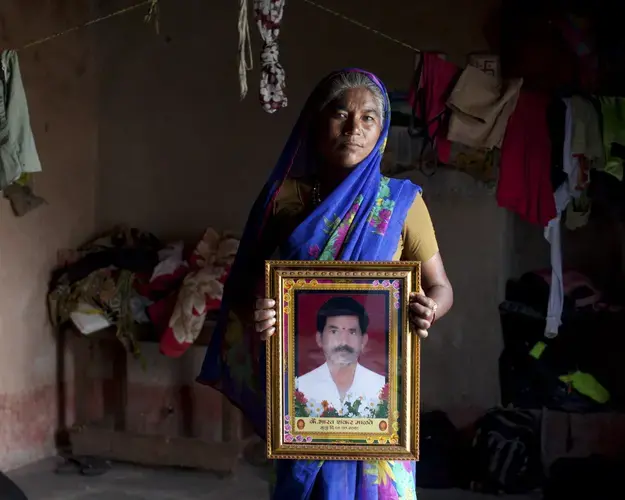
Pahwa has tangled with Facebook before. While he is a prolific tech commentator and journalist, he is best known for leading the successful campaign against Facebook’s Free Basics initiative in India. After investing substantially in promoting the program, which aimed to give users access to a small group of data-light websites and services, Indian regulators banned it in 2016. It was an embarrassing and highly public setback for Zuckerberg’s ambitious plans to bring a limited version of the internet to the world’s poorest and most unconnected.
Pahwa was not surprised that WhatsApp was slow to respond. Foreign tech companies, he says, have been keen to use the massive Indian market as a test lab for their products, but are far less willing to address problems when they inevitably arise. “How much shit did Uber let happen before they started dealing with their problems?” he asks, a reference to the ride-sharing company’s disastrous handling of a 2014 rape case in India that roiled the company.
A former employee in Facebook’s India operations said the company was largely focused on bolstering two key metrics: the number of monthly active users and time spent on the platform. They failed to identify disinformation and false news flooding Facebook. This content then began to “migrate” to WhatsApp. “The thing about Facebook is that, as a company, unless it is knocked down it won’t learn,” says the former employee, who would only speak on condition of anonymity.
Amrit Ahuja, a spokesperson for Facebook’s India operations, said the company took appropriate steps to address the issue, including partnering with fact-checking organizations and training journalists to spot fake news.
IN LATE AUGUST, WhatsApp’s CEO Chris Daniels visited India to meet with government officials. Daniels’ job title was new, but the location was familiar. He had previously visited India in his role heading the aborted Free Basics initiative in the country.
WhatsApp declined to make Daniels available for an on-the-record interview, but Gopalakrishnan S., the joint secretary at the Ministry of Electronics and Information Technology, described the meeting between Daniels and the ministry on the day it took place as “cordial.” He says, however, that WhatsApp and the Indian government are at an impasse over how to trace problematic messages that have caused real-world harm.
WhatsApp has to find a way to stop content spreading further if it is against “the state’s interest or against public order, decency, or morality,” Gopalakrishnan says, and has “to find out who started the mischief in the first place.”
The question Gopalakrishnan says the government wants answered is simple: Who started the rumor? “Their convenient answer is that our architecture doesn’t support it today. Fine, but your tool is being misused,” he says. “Nothing in the law prevents you from being accused as an abettor to crime.”
Carl Woog, a spokesperson for WhatsApp, says the company has “stressed that creating and storing a permanent record of every message for the purpose of future government surveillance would change the very premise of WhatsApp, which is to provide for private communication.”
Daniels made a follow-up visit in late October. While he told the Economic Times in an email interview that the main focus of the trip was to look at WhatsApp’s support of local businesses, Gopalakrishnan says the issue of message tracking was again the major concern for the government.
In the wake of the meeting, Ravi Shankar Prasad, the IT Minister, said that the government did not want to decrypt messages, but still wanted access to the “location and identification” of the senders of messages that lead to violence. “We have not changed our ask,” says Gopalakrishnan, who compared WhatsApp to a gun manufacturer that claims it has done nothing wrong when a firearm it produces is used in a killing.
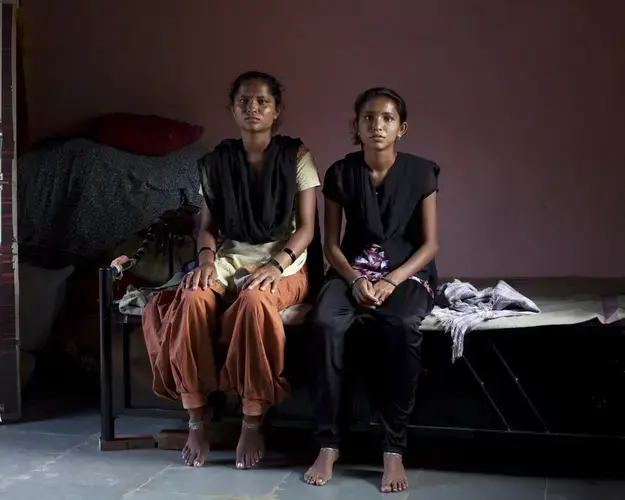
“Put yourself in Chris’ shoes,” he says, referring to Daniels. “Can you say you have a platform and, when the platform is misused, claim complete immunity? That is impossible.” Woog says Prasad’s comments about encryption were welcome, and the two sides continue to discuss the issue.
Meanwhile, the delay in a green light for the payment platform drags on. The company is now turning its focus to launching first in other countries, Daniels told the Economic Times, the clearest sign yet that the delay has become a large enough issue to force a rethinking of business strategy.
Local competitors, meanwhile, have benefited from the head start. Paytm, founded by Indian billionaire Vijay Shekhar Sharma, is the sector’s dominant player, with around 350 million users. Warren Buffett’s Berkshire Hathaway this summer added its name to a growing list of investors in the company, which includes Alibaba and Japan’s SoftBank.
Dilip Asbe, CEO of the National Payments Corporation of India, the umbrella organization for operating retail payments systems, initially agreed to answer questions for this article, but then declined to comment on questions regarding WhatsApp and data localization. The Reserve Bank of India did not respond to multiple requests for comment regarding the delay. Local media reports from October quoting unnamed NPCI officials said WhatsApp was not in compliance with data localization requirements because it was storing “mirrored data” in India.
The company, Woog says, has built a system to store payment related data in India and is “seeking clarification on the RBI’s requirements.” Asked if he believed there was a connection between the holdup in the payment platform receiving clearance and the ongoing discussions with government over the messaging platform, Woog would say only that the company is seeking “a level playing field with other technology companies that provide services to people in India.”
There is a wide consensus in India among consultants, lobbyists, and officials at other tech companies that at least part of WhatsApp’s difficulties stem from the government’s rocky relationship with Facebook.
Brian Acton, a cofounder of WhatsApp who left the company because of differences with Zuckerberg over how to monetize the platform, visited India in 2017. During a meeting with Prasad, Acton was told by the minister, “Don’t make the same mistakes as Facebook,” according to a person with knowledge of the meeting. Anshuman Gaur, Prasad's private secretary, did not respond to request for comment regarding the meeting.
Facebook’s embarrassing Free Basics setback in 2016 hurt the company’s reputation domestically, but WhatsApp—which had almost become essential to life in India—was still looked upon favorably by the government.
“It still had this halo,” the former Facebook employee says. “It was this brand that simplified life in multiple ways. It was spotless, clean, but I think finally the lynching and misinformation have done away with that.”
During a visit over the summer to Facebook’s offices in New Delhi, the company’s name was absent from the sign listing the companies occupying the building. Inside, near a bank of elevators, the Facebook name and logo was covered up by a piece of white paper taped to the directory. Asked about why the company appeared to be trying to keep its presence hidden, Ahuja, the company spokesperson, admitted that “India is a difficult country for Facebook.”
Gopalakrishnan's view that WhatsApp should make its messages traceable is shared widely among law enforcement officials who say their hands are tied in investigations that involve WhatsApp’s encrypted messages. From local police in Pimpalner to regional heads in the city of Mumbai, there are constant complaints about the inability of officers to locate the source of messages.
This is “beyond our control,” says Pandhare, the police superintendent in Dhule. WhatsApp, for its part, said in its first July letter responding to the Indian government that it responds to “valid law enforcement requests to help them investigate crimes,” and in August discussed with law enforcement how they can better use the platform in their work.
Police are also quick to blame uneducated users, at times in blunt terms. “You have 4G with a smartphone and an idiot holding it,” says Singh, the cyber police official. “The phone has become smarter than the chap who doesn’t know what to do.”
But other experts and analysts see India’s pervasive policing issues—corruption, politicization, and chronic understaffing—laid bare in officials’ inability to curb the violent outbreaks. Authorities have increasingly turned to cutting internet access as a temporary measure to stem unrest. There have been 130 internet shutdowns across India this year as of early December, according to the Software Freedom Law Centre, which tracks outages, up from 79 all of last year and just three in 2012, when tracking started.
Pahwa, the Internet Freedom Foundation cofounder, says police are either unable or incapable of helping the victims or arresting the people partaking in mob violence, who believe that they will not suffer consequences for their crimes. This is on some level "a law enforcement failure,” he says.
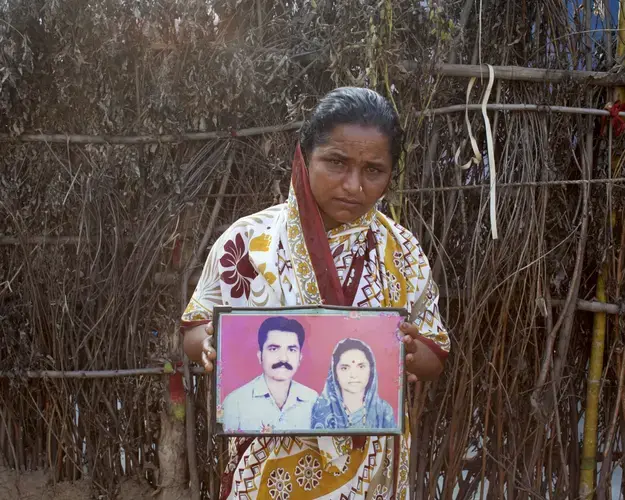
In Dhule the limits of Singh’s touted cybersecurity push, aimed at increasing tracking of online crime across Maharashtra and digitizing operations, were easy to see. Officers showed me a thick case file for a teenage girl whose Facebook account was hacked. They were dismayed after unsuccessful attempts contacting Facebook over the issue. One officer, after explaining the case, asked if I had an email address of a company official who might be helpful.
WOOG SAYS A group of news organizations will soon announce that they will work with WhatsApp during the upcoming elections to fact-check information spreading on the platform using the WhatsApp Business API. The system will be similar to the Comprova consortium of newsrooms that worked during Brazil’s elections to help tell users if content they were receiving was in fact correct.
A handful of dedicated fact-checking sites geared toward viral false news already exist in India, including Alt News, run by a civil-liberties activist; Check4Spam, cofounded by an IBM software engineer; and the aptly named Social Media Hoax Slayer. All are involved in the Sisyphean task of knocking down the financial scams, inflammatory political statements, and quack science that deluge users.
The scale of the task is daunting. National news events—holidays, natural disasters, and high profile deaths—create huge upticks in false news. One video in particular that has been linked to multiple violent attacks shows how stopping these false and insidious rumors may be harder than assumed.
In the video, shot in grainy CCTV style complete with a ticking time stamp in the bottom right corner and “CAM 1” in the left corner, a group of young boys play cricket near a driveway on a largely empty street. As they play, a black motorbike with two people onboard, both wearing black helmets with dark visors, enters the frame and travels toward the group before making a slow U-turn and disappearing off camera.
A few seconds later, the motorbike reappears. The driver pulls up next to one of the smaller boys, an onlooker to the game who is dressed in a red shirt, shorts, sneakers, and a baseball hat. The passenger reaches down and plucks the boy from the street, wedging the boy between himself and the driver. As the motorbike races off, the rest of the children give chase. The video cuts to another angle showing their ultimately unsuccessful effort to catch the motorbike. The children, joined by two girls, rush back to the driveway where they stand in a panic, having what appears to be an animated conversation.
When the video began to circulate last year, it came to the attention of Karen Rebelo, whose boss asked her to look into its origins after it was linked to seven deaths in the eastern state of Jharkhand. Rebelo is the deputy editor at BOOM, a small newsroom in Mumbai that in 2016 decided to dedicate itself to fact-checking viral content on Facebook, and then on WhatsApp. In April, BOOM became the only certified third-party fact-checker for Facebook in India.
A former financial journalist at Reuters, where she wrote about equity markets and mining mergers, Rebelo has a knack for fine details. (Disclosure: I worked for Reuters in Yangon, Myanmar, and Chicago from 2015 to 2017.) Rebelo now shifts through content—hoaxes, cons, doctored videos, and photos—trying daily to take the pulse of India’s internet and call out those filling it with a seemingly unending barrage of disinformation.
On her own Facebook page, Rebelo describes herself as a “sanitation worker cleaning up social media in India.” A bumper sticker for urban-legend-busting website Snopes.com is stuck to her cubicle in BOOM’s offices.
When she watched the video, there was one element that seemed out of place. The head scarfs worn by the girls in the final moments of the clip didn’t appear to be of Indian origin. The way they were tied and the style, Rebelo says, lead her to believe they were from an Islamic country, maybe Indonesia or Malaysia.
It was the early days of BOOM’s fact-checking efforts, and reporters were learning on the fly. She went to YouTube and started typing in search terms like “child kidnapping” and “CCTV,” hoping to find a hit. The guess and check method was time-consuming. The video popped up in her YouTube searches over and over throughout the day. Then, Rebelo says, she spotted a version that was longer than the others. Intrigued, she clicked on the video and waited for it to load.
Where the other videos had stopped after the boy is whisked away, this version continued. The motorbike returns and pulls up to the group of children. The passenger lowers the boy in red from the seat using one arm. As the group of children bounce up and down in celebration of their friend being safely returned, the motorbike passenger unfurls a banner over his head as he looks up toward the camera.
“It takes only a moment to kidnap a child from the streets of Karachi,” the banner reads. Moments later, credits appear in white font on a black screen. “Every year, over 3,000 children go missing in Karachi, Pakistan.” It continues, “Keep an eye on your children. Support Roshni in their efforts to find missing children.”
Rebelo's suspicion about the video originating from outside India were confirmed. The video was in reality part of an anti-child-kidnapping awareness campaign in Pakistan. “I just said, ‘Shit, it’s an ad!’ I was completely shocked. My jaw dropped,” Rebelo says. She adds, “I think I got a bit lucky there.”
This type of misleading editing isn’t uncommon, Rebelo says. The bulk of videos and photos that go viral are not doctored in a sophisticated manner using Photoshop or complex video-editing software. Most are simply cut, placed out of context, or presented as new when in fact they are years old. What you are seeing is real, but the context is not.
The video was created in 2016 by the marketing firm Spectrum Y&R for Roshni Helpline, a Pakistani NGO that locates and returns missing children and works on issues of gender-based violence. The clip was created to show how quickly a child can be kidnapped.
A spokesperson for the company credits the campaign with reuniting 10 children with their parents. “Unfortunately, Roshni Helpline is not the first nor the last organization to have its content distorted by unscrupulous elements,” the firm’s spokesperson said in a statement. “This was a public service video by an organization that is engaged in remarkable work. It is distressing to say the least that it has been edited and used for malicious purposes with tragic results.”
Rebelo published her first story pointing out the misleading editing of the video on May 23, 2017. The article also debunked misinformation around the photos of dead Syrian children, the same images police believe were part of the rumor-mongering that lead to the mob killings in Rainpada.
The video and images encapsulate the vexing nature of viral content and the long memory of the internet. Despite being thoroughly debunked, the video continues to surface, causing real-world harm and chaos.
A year after Rebelo found the original, the doctored video went viral in the southern state of Tamil Nadu, causing panic. An elderly woman, accused of being a child kidnapper, was killed in another bout of mob violence, according to local media reports. Two more deaths in Assam in June were linked to the video.
When asked if finding the original video was her best work, Rebelo shoots back a quick “no.” The fact that it is still circulating has negated what should have been a defining article for the site. “To me, personally, I’ll never forget that video as long as I live,” she says. “It has caused so much damage.”
IN THE GOVERNMENT’S casting blame on WhatsApp for violence, critics and political opponents see an official strategy rife with contradictions. The ruling right-wing Bharatiya Janata Party, or BJP—which Human Rights Watch accuses of promoting “Hindu supremacy and ultra-nationalism at the expense of fundamental rights for all Indians”—has created its own massive online presence.
The party, and its fervent supporters, use Twitter, Facebook, and WhatsApp to churn out content that is often inflammatory and particularly anti-Muslim, says Rohit Chopra, an associate professor at Santa Clara University in California, who studies Hindu nationalism and the media.
Prime minister Narendra Modi is himself an avid social media user, with some 44 million followers on Twitter, making him the most-followed current head of state behind Donald Trump. The BJP created thousands of WhatsApp groups to campaign in the run-up to elections in the northern state of Uttar Pradesh 2017, a shift in tactics from relying most heavily on Facebook.
“The BJP have not criticized any of the groups using WhatsApp. Rather, they have targeted and criticized WhatsApp. The chutzpah is remarkable,” Chopra says. “These groups have encouraged a climate of violence and fear. To blame the technology is very crude.”
Chopra, who has been critical of Twitter and Facebook for not doing enough to curb hate speech and disinformation in the past, says the government is “playing a double game” with WhatsApp. “What is WhatsApp supposed to do?” he asks. “On one hand, tech companies are critiqued for sharing a lot of data and not keeping things private. But for WhatsApp the strength of the platform”—encryption—“becomes a basis for political criticism.”
With a nationwide election early next year, the amount of disinformation will surely increase as political parties jockey for position. The election is shaping up to be an enormous test for WhatsApp. In other parts of the world, the platform has already proved to be a powerful political tool during national elections, and one that can be difficult to wrangle.
According to an October front page report by Folha de São Paulo, a leading Brazilian newspaper, supporters of Brazilian president Jair Bolsonaro used WhatsApp to send hundreds of millions of misleading and lie-filled messages while campaigning. Some people involved in the scheme, according to the newspaper, used overseas phone numbers to circumvent WhatsApp controls on spamming.
WhatsApp is “concerned about recent reports that political parties are acquiring illegal lists of mobile phone numbers in India and are closely monitoring user reports and banning accounts engaging in spammy behavior,” Woog says. He adds that WhatsApp officials also met with members of the National Election Commission and political parties to discuss the issue of spam messages.
The concern seems well placed. In late September, BJP president Amit Shah gave a speech to a gathering of the party’s social media volunteers in the city of Kota in Northern India. He boasted that the party had 3.2 million supporters in its WhatsApp groups. With this number of users, he says in a video of the speech uploaded to YouTube, they can make messages go viral whether “sweet or sour, true or fake.”
DIGAMBAR SHANKAR MALVE learned that his brother and cousin had been killed in Rainpada when he heard it on TV. Some boys in the village pulled out a mobile phone and showed him a shaky clip of the angry mob rampaging that morning.
That night, he set off from a village in the district of Solapur to help retrieve the bodies, reaching the town early the next morning. Others were too afraid to go, fearing they too would be killed. Machhindra Bhosale, 58, whose brother-in-law and distant cousin were among the victims, said some in the tribe had asked for police to visit them in their own villages, but no one has come.
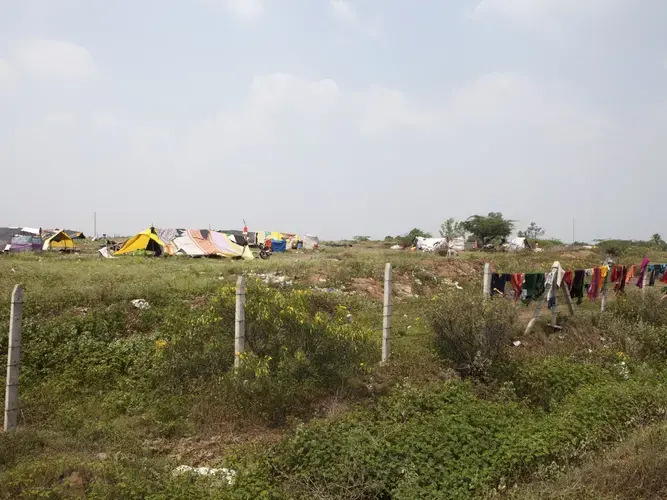
“Nobody has taken efforts to inform us about the case,” Bhosale says.
The Indian government gave some compensation to relatives of those who were killed, but has not met their other demands, like guaranteed employment for next of kin. Members of the Nath Panthi Davari Gosavi have long been ostracized and faced intolerance, says Kalidas Shinde, who is doing postdoctoral research at the Tata Institute of Social Sciences in Mumbai on the group, of which he is also a member. Bhosale described the community as “completely neglected.” Even more than 70 years after India gained independence, he said, their livelihood remains begging.
That has made them almost natural targets for violence. When members of the tribe arrived in Rainpada in July, the rumors of child-snatching bandits had circulated for weeks, likely reinforcing preexisting biases and judgments about the threat of outsiders.
WhatsApp may well be amplifying these biases. In an extensive report published last month, researchers from the BBC studying the spread of fake news in India found that WhatsApp groups encourage a “tightness” among users. “WhatsApp usage is about validation of one’s beliefs and identities through the sharing of news and information,” the report says. WhatsApp is funding studies into the issue of misinformation in countries including India.
This information ecosystem enables “homophily”—birds of a feather flocking together. This characteristic of WhatsApp usage, which differs from Facebook because it is not driven algorithmically, could begin to explain why the platform has lead to “mobilization in the cause of violence,” researchers say.
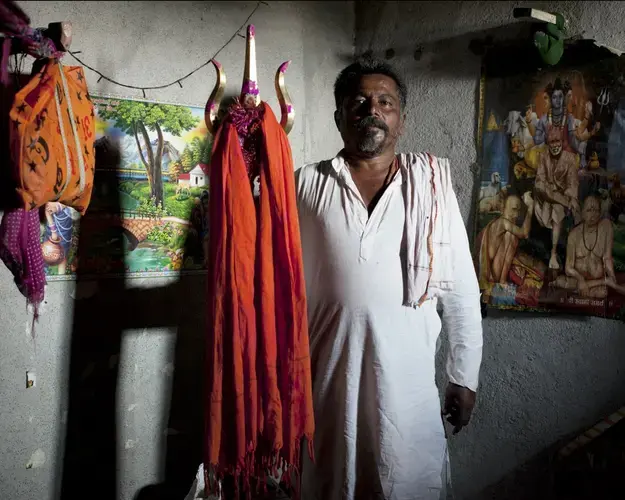
Malve, 65, says the killings have deeply shaken the Nath Panthi Davari Gosavi community. Months after the deaths, he says, fear and unease are pervasive. In their immediate aftermath, people were scared to go out and beg for alms, he says, afraid that another incident of mob violence might erupt. In this hyperconnected country, rumors—even those that have been proven false—can quickly begin to swirl again.
In late November, in fact, BOOM, the fact-checking website, posted a story about rumors of organ harvesting and child snatching again going viral. Among the pictures being spread on WhatsApp was one showing Syrian children—the same photo used to stoke fear and panic in Rainpada. “Child Kidnapping Rumours Revived” read the story’s headline.
Additional reporting by Tejas Harad
Correction: The article has been updated to clarify that Nikhil Pahwa, co-founder of the Internet Freedom Foundation has since left the organization.


![Two men stand atop the ruins of a building destroyed by the floods in Kerala. [CC by 3.0] from Wikimedia Commons. Kerala, 2018. Two men stand atop the ruins of a building destroyed by the floods in Kerala. [CC by 3.0] from Wikimedia Commons. Kerala, 2018.](/sites/default/files/09-05-18/kerala-flood.jpg)



